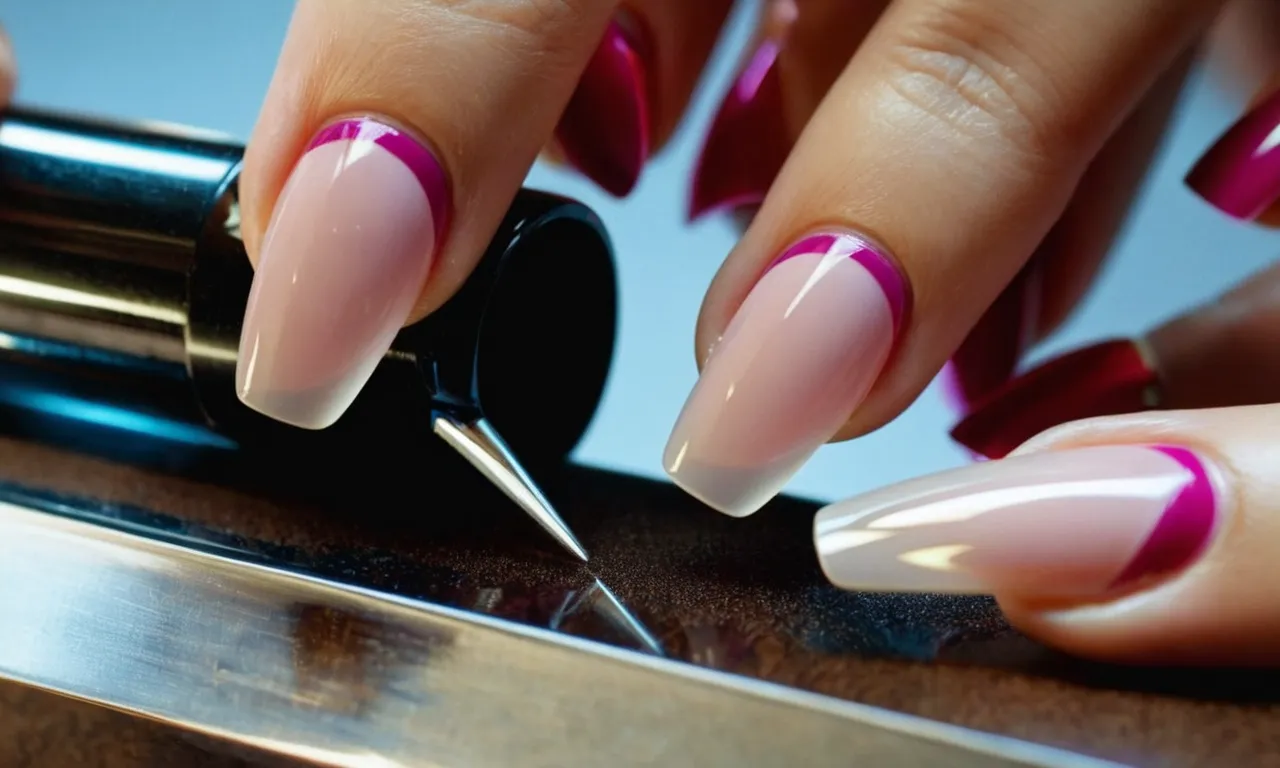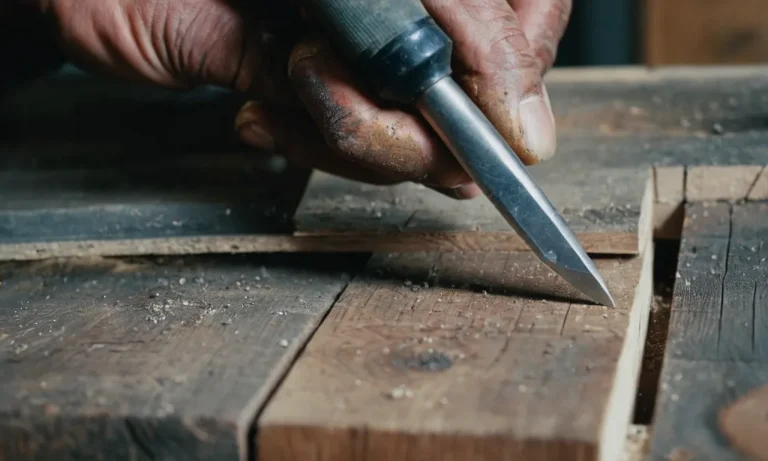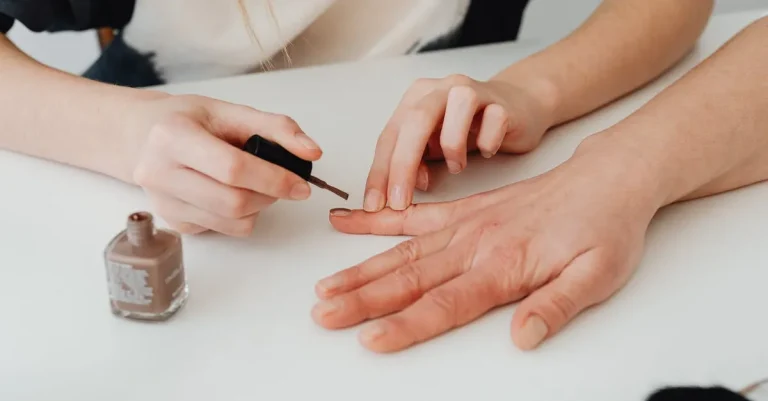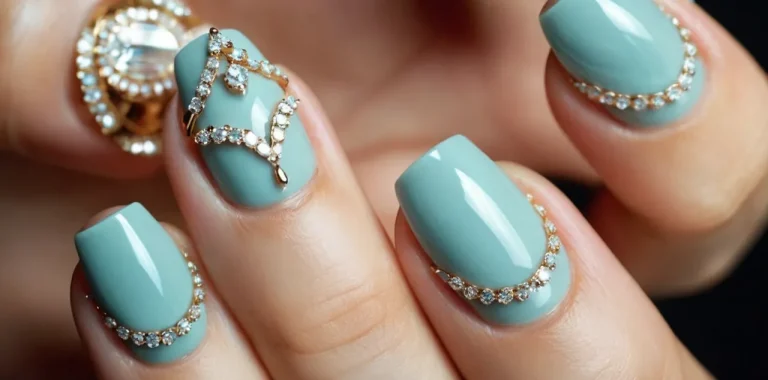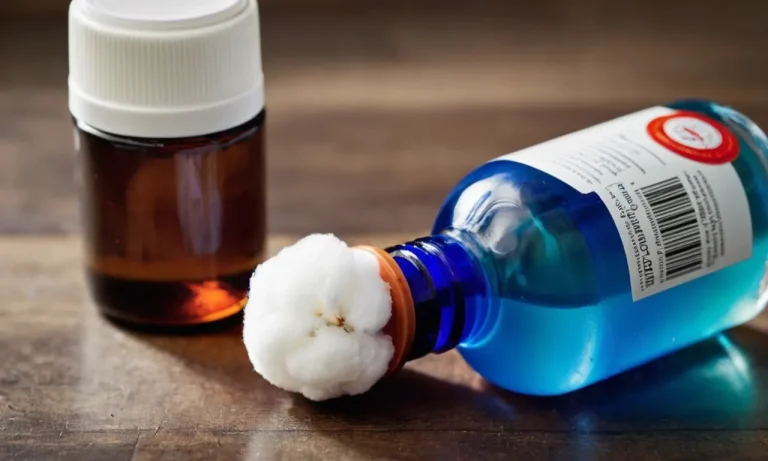What Is A Nail Fill? A Complete Guide
Getting your nails done is an indulgence that many people enjoy on a regular basis. If you get acrylic, gel, dip powder or any other type of artificial nails applied, you’ll need to get them refilled routinely as your natural nail grows out.
If you’re short on time, here’s a quick answer to your question: A nail fill is a maintenance procedure to fill in the gap between your cuticle and the artificial nail as your natural nail grows out. It replaces the material that has grown away from the cuticle to recreate the original artificial nail length and shape.
In this comprehensive guide, we will cover everything you need to know about nail fills including what they are, why you need them, how often to get them, what to expect during the process, tips and alternatives.
What is a Nail Fill?
A nail fill, also known as a nail rebalance or infill, is a maintenance procedure that involves reshaping the natural nail and applying a new layer of acrylic, gel or dip powder to your existing manicure so it remains looking fresh and flawless.
It allows you to keep your length and shape without having to remove and reapply a whole new set.
Definition of a Nail Fill
During a fill appointment, your manicurist will file down the grown out section of your enhancement to blend it with your natural nail. They smooth and buff the surface, push back and trim your cuticles if needed, then add new product to fill in the gap that has grown out.
Fills are necessary because natural nails grow out approximately 1-2mm per week on average. As the nail plate extends, a visible demarcation line becomes apparent between the colored polish and natural nail tip.
Product lifts or cracks can also develop as the bond between the enhancement and nail weakens over time.
Fills are done every 2-3 weeks to maintain an even look and keep nails strong and protected.
Difference Between a Fill and a New Set
While a new set involves applying enhancement over the entire natural nail and creating a whole new shape and length, a fill focuses on the re-application to the new growth area only. The original shape, length and smile line remain intact.
Some key differences between a fill and a new set include:
| Nail Fill | New Set |
|---|---|
| Quicker appointment time | Longer appointment time |
| Lower cost | Higher cost |
| Less damage to natural nails | Higher risk of damage with repeated removal and reapplication |
| Retains your length and shape | Allows you to change shape and length each time |
Choosing to have regular fills will help maintain the health and integrity of the natural nail plate. However, periodically starting fresh with a new set allows you to modify your manicure as desired.
Why Do You Need Fills?
Natural nail growth
As your natural nails grow out, the acrylic or gel polish on top can begin to separate, causing gaps near the cuticle area. On average, nails grow at a rate of 3 to 5 millimeters per month. With regular use of your hands and normal wear and tear, most people need a fill every 2 to 3 weeks to maintain the look and structure of their manicure.
During a fill appointment, your nail technician will file and shape the acrylic or gel overlay to match your new nail growth. This helps prevent cracking or lifting. Getting timely fills ensures that your manicure continues looking fresh and flawless.
Replacing lifted product
In addition to natural growth, fills are necessary when enhancement products like acrylic or gel begin lifting or cracking off the natural nail. Lifts frequently occur when the bond between the natural nail and the overlay has weakened over time.
Exposure to chemicals like cleaning solutions can cause products to loosen. Lifting can also happen if you catch your nail on something and pull up an edge.
Rather than removing the entire manicure and starting over, your tech can usually repair lifts and cracks during a fill appointment. They will gently file away the raised edge, apply nail primer to refresh the bond, and brush on new product to smooth and reinforce the area.
Getting fill appointments every 2-3 weeks can catch small lifts before they become worse.
Occasionally, if lifts and cracks are very severe, the best option is to soak off the acrylic or gel and do a full new set. But in most cases, timely fill appointments prevent the need to completely replace enhancements. Fills reinforce your manicure’s longevity and structural integrity.
How Often Should You Get Fills?
When it comes to getting nail fills, there are a couple of factors to consider when determining the ideal frequency. Here are some general guidelines:
Every 2-3 Weeks
Getting a fill every 2-3 weeks is recommended for most people. This allows your nails to grow out just enough for a proper fill, without getting too long or allowing too much of your natural nail to grow out. Fills done every 2-3 weeks help maintain the strength and appearance of your enhancements.
Some key benefits of 2-3 week fill schedule:
- Keeps nails looking fresh and well-maintained
- Minimizes damage to natural nail
- Allows for gradual length maintenance
- Prevents lifting or cracking between fills
Every 2 weeks is great for those who experience quick growth. Every 3 weeks allows a bit more regrowth for those with slower-growing nails.
Depends on Nail Growth
While every 2-3 weeks is the general recommendation, nail growth rates vary from person to person. Some experience very quick growth, while others remain slow-growing. Nail growth can also fluctuate seasonally or due to health changes.
Some factors that affect individual fill schedule needs:
- Rate of nail growth – faster growth needs more frequent fills
- Nail length – longer nails may require fills every 1-2 weeks
- Lifestyle and job – those with active jobs/hobbies may need more frequent fills
- Seasons – nails grow faster in summer, slower in winter for many
- Health changes like pregnancy can accelerate growth
- Certain medications or supplements may impact growth
That’s why it’s important to take your individual growth patterns into account. Track your regrowth and adjust your personal fill schedule as needed. Frequent clients at a salon will often alternate between 2-3 week gaps between fills.
The key is to not go too long between fills. Letting nails overgrow can cause lifting, cracking, and put pressure on the natural nail. Try not to exceed 3-4 weeks between appointments.
Getting fills at the first sign of overgrowth is crucial for anyone wanting to maintain the health and appearance of their manicure. Discuss your growth patterns with your nail tech and collaborate to determine the optimal timing for your unique nails.
What to Expect During a Fill Appointment
Removing lifted product
The first step in a nail fill appointment is removing any lifted or damaged product from your existing manicure. Your technician will gently buff away lifted polish, gel, or acrylic using a file or electric drill.
This process removes any loose material and rough edges to prep the nail for fresh product. Don’t be alarmed if you hear the faint sound of drilling during this process – it’s a standard and safe technique for nail removal as long as it’s done with care.
Shaping and filing
After removing the lifted product, your nail tech will shape and file each nail to ensure even length and contour. They may trim down your nails with clippers or gently file them into the desired shape using a hand file or electric drill.
This step evens out your nails and thins out the product near the cuticle for a tidy, uniform look. Filing also roughs up the surface of the nail plate for better adhesion. A good nail shape should complement the natural shape of your nails for a smooth finish.
Reapplying product
Now it’s time for a fresh layer of polish, gel, or acrylic. Your tech will prep your nails by pushing back cuticles, cleansing with a dehydrator, and applying primer. Then they’ll brush on new layers of product, extending it slightly past the edge of your natural nail.
Acrylic or gel extensions may be applied to add length and thickness. Your tech will shape and refine as they go to match your desired length and style. According to several sources, a fill requires applying about half the amount of product used in a full set.
The finished product should look smooth and symmetrical.
Drying and curing
The final step is drying and curing the nails to harden the product. Polish will simply air dry. Gel polish is cured under an LED or UV lamp for 30-60 seconds per coat. Acrylic and builder gel require longer curing times under a lamp. Your tech may finish by massaging oil into your cuticles and hands.
Ta-da – your fresh fill is complete! Fills every 2-3 weeks help maintain strong, beautiful nails.
Tips for Making Fills Last Longer
Use your hands gently
Be gentle with your hands and avoid using them as tools to pry things open or perform other tasks that can lead to breaks or cracks in your nails. This protects the nail fills and allows them to last longer before needing replacements.
Moisturize nails and cuticles
Keep nails and cuticles moisturized to maintain flexibility and prevent cracking or peeling that can undermine the fills. Massage a rich cuticle oil or hydrating cream into the nails and cuticles at least twice per day. Products with jojoba, vitamin E or shea butter can nourish and condition.
Avoid picking at nails
Resist the urge to pick at your nail fills or peel off little pieces. This can loosen the fills and make gaps for bacteria or fungus to get underneath. It also makes the nails look messy. If you notice a rough edge or other flaw, make a note to have your nail tech take a look at your next appointment.
Go to infills on schedule
One of the best things you can do to extend the life of your fills is to get them filled on schedule. Most manicurists recommend infills every 2-3 weeks. Skipping your regular appointments allows more time for lifting, cracking and other damage. Staying on schedule allows for quick and easy fixes.
Fill Alternatives
Removing entirely
Completely removing gel nail extensions and going back to natural nails is always an option. This allows your natural nails to breathe and recover from any damage caused by repeated nail fill sessions. Here are some pros and cons of removing gel nails entirely:
- Pros:
- Natural nails become stronger and healthier
- No risk of damage from UV lamps used in gel manicures
- Take a break from the time and expense of fills
- Cons:
- Need to grow out the gel – can look unsightly
- Natural nails may look dull/thin at first
- Lose the durable gel coating that protects nails
Many people remove gels and take a nail “vacation” periodically to give their natural nails a rest. Some sources recommend removing gel nails for at least one month per year. This allows the nail plate to recover and rebuild strength.
DIY fills at home
Doing your own soak-off gel nail fills at home is possible with some practice. However, it carries certain risks compared to having them done professionally.
The main considerations with DIY gel fills are:
- Safety – incorrectly using UV lamps, drill bits, nail files, etc can cause injury
- Skill – achieving an even, professional-looking fill takes practice
- Products – quality of gels and lamps greatly impacts outcomes
- Time – the process tends to be more tedious and time-consuming
If opting to fill gel nails at home, be sure to research techniques thoroughly first. Youtube tutorials can be helpful for visual learners. Invest in quality gel polish kits and tools. Refine your method with patience and care. Remove gels fully and give nails an occasional break.
And if results continue to be unsatisfactory, return to the professionals!
Conclusion
Nail fills are a crucial part of maintaining any type of artificial nail service. By getting them routinely every 2-3 weeks, you can enjoy the longevity of your manicure and avoid having to get a whole new set.
Going to your appointments consistently, caring for your nails properly, and avoiding damage can all help you get the most out of your fills.
Now that you know all about what fills are and why they are needed, you can show up to your next appointment ready and informed. With regular maintenance and touch-ups, you can keep your nails looking fabulous!

